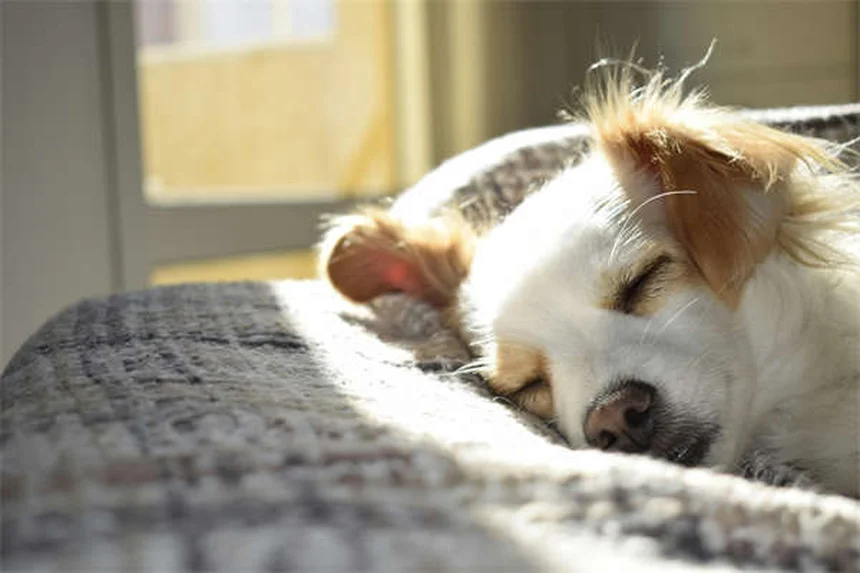Wondering about polycystic disease in hamsters? Here's the deal: it's a serious condition where fluid-filled cysts develop in your hamster's organs, and it requires immediate vet attention. I've been through this with my own hamster, and let me tell you - catching it early makes all the difference. These cysts typically show up in the liver, pancreas, or reproductive organs, growing as large as 3 centimeters (that's huge for a tiny hamster!). The good news? While treatment options are limited for some organs, spaying can effectively treat ovarian cysts in females. Stick around as we break down everything you need to know to keep your furry friend healthy.
E.g. :5 Best Independent Cat Breeds for Busy Pet Parents
Hey there, fellow hamster lovers! Let's talk about something serious but important - polycystic disease in our furry little friends. I've been researching this condition, and I want to share what I've learned in a way that's easy to understand.
Imagine your hamster's organs developing little fluid-filled balloons - that's essentially what cysts are. These pesky sacs typically show up in the liver, but they can also appear in:
The scary part? These cysts can grow to about 3 centimeters - that's huge for a tiny hamster! If they burst, it's an emergency situation. That's why we need to catch this early.
How can you tell if your hamster might have polycystic disease? Look for these red flags:
| Symptom | What You Might Notice |
|---|---|
| Appetite changes | Your hamster suddenly ignoring their favorite treats |
| Behavior changes | Flinching when you try to pet their belly |
| Physical changes | Patchy fur loss, especially around the tummy area |
Here's something interesting - did you know that female hamsters with ovarian cysts might stop having babies? It's one of those subtle signs that often gets overlooked.
 Photos provided by pixabay
Photos provided by pixabay
The root cause comes down to hormonal imbalances. It's most common in hamsters over 1 year old - kind of like how humans get certain health issues as we age.
Think of it this way: your hamster's body is like a well-oiled machine. When the hormones get out of whack, it's like putting the wrong fuel in your car. Things just don't work right!
If you suspect something's wrong, your vet will probably start with a gentle belly feel (we call this palpation). But to really see what's going on inside, they might use:
Here's a question you might be wondering: "Can't they just do a blood test?" Great question! While blood tests can show some abnormalities, they don't always catch cysts specifically. That's why imaging tests are so important.
Let's be honest - the news isn't always great with this condition. For cysts in organs like the liver or pancreas, treatment options are limited. But for female hamsters with ovarian cysts, there's hope!
Spaying (removing the reproductive organs) can be a game-changer. It's like hitting the reset button on their hormonal system. The surgery might sound scary, but modern vet medicine has come a long way.
 Photos provided by pixabay
Photos provided by pixabay
After any treatment, your hamster will need some TLC. Here's what I recommend:
Remember that old saying "an ounce of prevention is worth a pound of cure"? While we can't completely prevent polycystic disease, early detection makes all the difference. Regular check-ups with your vet can catch problems before they become emergencies.
If your hamster is diagnosed, don't panic! Many hamsters live happy lives with proper care. The key is to:
Here's another question that might pop up: "How long can a hamster live with cysts?" The answer depends on so many factors - the size and location of the cysts, how early they're caught, and your hamster's overall health. Your vet can give you the best estimate for your specific situation.
While we can't guarantee prevention, these tips might help reduce risks:
At the end of the day, being an informed and attentive hamster parent is the best thing you can do. These little creatures depend on us completely, and understanding conditions like polycystic disease helps us give them the best care possible.
 Photos provided by pixabay
Photos provided by pixabay
Don't wait until it's an emergency! Call your vet if you notice:
Remember, hamsters are masters at hiding illness. By the time they show obvious symptoms, they're often quite sick. Trust your instincts - if something seems off, it's better to be safe than sorry.
Dealing with a sick pet is tough. I've been there myself, watching a beloved hamster struggle with health issues. It's okay to feel worried or upset. The important thing is to focus on providing the best care you can.
Connect with other hamster owners online or in local groups. Sharing experiences and tips can make the journey easier. And remember - you're not alone in this!
You know what's fascinating? While we often talk about hormonal imbalances causing cysts, there's a whole genetic component we rarely discuss. Some hamster breeds are actually more prone to developing cysts than others. Let me break it down for you.
Through my research and conversations with breeders, I've noticed Syrian hamsters tend to develop cysts more frequently than dwarf varieties. Here's a quick comparison:
| Breed | Cyst Risk Level | Average Age of Onset |
|---|---|---|
| Syrian (Golden) | High | 12-18 months |
| Roborovski | Low | Rarely develops |
| Winter White | Moderate | 18+ months |
Ever wonder "Why do some breeds get cysts more than others?" It's all in their DNA! Just like how some families have a history of certain health conditions, certain hamster lineages carry genetic markers that make them more susceptible to cyst formation.
Here's something most hamster owners don't realize - what you feed your furry friend could impact cyst growth. I'm not saying diet causes cysts, but it might influence how quickly they develop.
High-fat diets seem to accelerate cyst growth in susceptible hamsters. Think about it - if you're constantly feeding sunflower seeds (the hamster equivalent of potato chips), you're not doing their little organs any favors. Instead, focus on:
Stress is a silent cyst promoter that most of us overlook. Imagine living in a noisy environment with bright lights all the time - you'd be stressed too! Here's what I've learned about creating a cyst-friendly habitat:
First, location matters. Don't put the cage near TVs or speakers - those constant vibrations mess with your hamster's stress levels. Second, lighting is crucial. Hamsters need proper day/night cycles, so avoid keeping their cage in 24/7 bright rooms.
Temperature plays a bigger role than we think too. Hamsters prefer 65-75°F. Too hot and their bodies work overtime; too cold and their metabolism slows down. Both extremes can potentially impact cyst development.
While traditional vet care is essential, some complementary approaches might help manage symptoms. I'm not suggesting these replace medical treatment, but they could provide additional support.
Acupuncture for small animals has shown promise in managing pain and improving organ function. Some holistic vents recommend specific herbal supplements that may support liver health. Always check with your vet before trying anything new though!
Massage therapy sounds funny for hamsters, but gentle abdominal massage (when cysts aren't at risk of rupture) can improve circulation and digestion. Just imagine giving your hamster tiny belly rubs - how cute is that?
Let's talk dollars and cents because vet care isn't cheap. A spay surgery for ovarian cysts can run $200-$400 depending on your location. Diagnostic ultrasounds might cost $100-$250. It adds up fast!
Here's a money-saving tip: look into pet insurance before your hamster develops issues. Some plans cover exotic pets, and while they won't cover pre-existing conditions, they can help with future problems. Alternatively, start a "hamster health fund" - just a few dollars each week can build a safety net.
If you're thinking about breeding hamsters, this information is gold. Hamsters with a history of cysts shouldn't be bred - it's that simple. Why pass on those problematic genes?
Responsible breeders keep detailed health records of their lines. Ask to see these before purchasing a hamster you might want to breed. A good breeder will happily share this info - if they refuse, that's a red flag waving right in your face!
This is the toughest part of pet ownership, but we need to talk about it. If cysts become so severe that your hamster is in constant pain or can't perform basic functions, euthanasia might be the kindest option.
How do you know when it's time? Ask yourself: "Is my hamster still enjoying life?" If they've stopped grooming, can't move comfortably, or show no interest in food or interaction, it might be time to have that difficult conversation with your vet.
Losing a hamster to this disease hurts. I've been there, crying over a tiny furry friend that brought so much joy. Give yourself permission to grieve - these little creatures leave big paw prints on our hearts.
When you're ready, consider honoring your hamster's memory by donating to small animal research or volunteering at a shelter. It's a beautiful way to transform grief into something positive. And who knows? Maybe your next hamster will benefit from the knowledge you've gained through this difficult experience.
The field of small animal medicine is always advancing. Just last year, researchers made breakthroughs in minimally invasive cyst drainage techniques. Here's how you can stay informed:
Knowledge is power, friends! The more we understand about polycystic disease, the better we can care for our hamster buddies. Keep learning, stay observant, and remember - you're doing an amazing job as a pet parent!
E.g. :Internal (Polycystic) Cysts in Hamsters | PetMD
A: The first signs you might notice include your hamster losing interest in food and dropping weight unexpectedly. They may start avoiding your touch, especially around their belly area - this is because the cysts cause abdominal pain. Another telltale sign is patchy hair loss, particularly on their underside. Female hamsters might stop having babies if their reproductive organs are affected. Remember, hamsters are pros at hiding illness, so by the time you see these symptoms, it's crucial to get to the vet ASAP. I learned this the hard way when my hamster, Peanut, suddenly stopped running on her wheel - turns out she was dealing with liver cysts.
A: Recovery depends on where the cysts are located and how early they're caught. For cysts in organs like the liver or pancreas, the outlook isn't great - these are tough to treat. But here's some hope: female hamsters with ovarian or uterine cysts often do well after spaying surgery. The key is catching it before cysts burst, which can be life-threatening. With proper post-op care (including keeping their cage extra clean and maybe using a tiny cone), many hamsters bounce back surprisingly well. My vet always says, "Early detection equals better outcomes," so regular check-ups are a must.
A: Your vet will start with a gentle belly exam (called palpation) to feel for unusual lumps. But to really see what's going on inside, they'll likely use X-rays or ultrasound - think of it like taking pictures of your hamster's insides. Some owners ask about blood tests, but these don't always show cysts specifically. The imaging tests give the clearest picture of where cysts are and how big they've grown. When I took Peanut in, the ultrasound showed three cysts in her liver - scary to see, but it helped us make the right treatment plan.
A: Yes, unfortunately it can be quite painful, especially as the cysts grow larger. That's why you might notice your hamster flinching when you try to pet their belly or becoming less active overall. The pressure from the cysts causes discomfort, and if they rupture, it becomes an emergency situation. That's why it's so important to watch for behavioral changes - your hamster can't tell you they're hurting, but they'll show you through their actions. Providing soft bedding and keeping their environment stress-free can help manage their discomfort while you work with your vet on treatment options.
A: While there's no guaranteed prevention, you can reduce the risks by choosing your hamster from a reputable breeder who screens for health issues. Maintaining a balanced diet (go easy on fatty treats!) and keeping their living space clean helps too. Since this condition often shows up in hamsters over 1 year old, scheduling regular senior check-ups with your vet becomes extra important. Think of it like human health screenings - catching problems early gives you the best shot at effective treatment. And hey, even if your hamster does develop cysts, remember that with proper care, many can still enjoy good quality of life.
Recommended
5 Best Independent Cat Breeds for Busy Pet Parents
Mast Cell Tumors in Ferrets: Symptoms, Treatment & Care Tips
10 Common Cat Fears & How to Calm Your Anxious Kitty
Where Do Ticks Hide on Dogs? 5 Sneaky Spots You're Missing
Why Is My Cat Throwing Up Yellow Liquid? 5 Common Causes Explained
Do Cats Recognize Themselves in Mirrors? The Surprising Truth